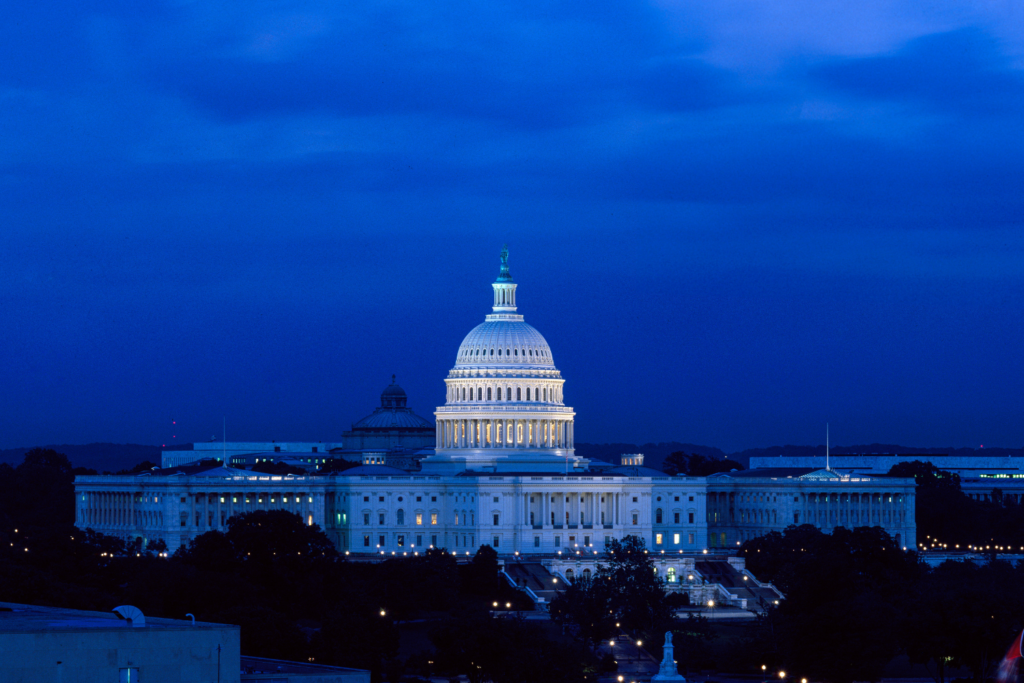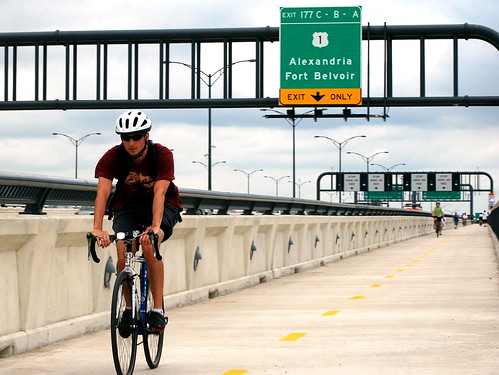
A real plan to fix bridges, or a reprise of attacks on pedestrian safety?
Our reports calling attention to our nation’s deficient bridges have gained enormous traction in recent weeks, to the point that members of Congress and the White House are citing our data in demonstrating the need for infrastructure investment. Unfortunately, some are using them to make disingenuous attempts to eliminate a small program they’ve been trying to put on the chopping block for years.
 |
| A New Trail Originally uploaded by M.V. Jantzen to Flickr. |
| Safe travels for people on foot, on bike and in cars on the new Wilson Bridge in Washington, D.C. Should we really have to choose? |
The small Transportation Enhancements program represents less than 2 percent of all transportation funding, and more than half of that 2 percent is used to help make walking and biking safer — a worthy expenditure considering 10 percent of trips are taken on foot and 47,700 people on foot were killed from 2000-2009.
Senator Rand Paul is expected to offer an amendment next week to take all of the TE money and put it toward bridge repair. And a handful of others in Congress have been trying to kill this program for years, well before the current talk of austerity.
Sen. Paul’s proposal doesn’t represent a sincere plan to repair our bridges, but unfortunately, a handful in the media are still taking the bait.
The question is this: With the nation facing a transportation crisis that has gotten little attention outside of policy wonks and Washington, should the federal government continue to mandate that states spend federal dollars on pedestrian safety, bicycling trails, landscaping and historic preservation?
When you ask the wrong question, you often get the wrong answer. And this question in particular has been manufactured by those who would capitalize on the sense of urgency about our bridges to eliminate a program they’ve been after for years.
We’ve covered before how the money spent on walking and biking safety won’t actually do anything to address the bridge backlog. It would take Kentucky 66 years of bike/ped money to fix all of the bridges that are deficient today. And as we wrote in National Journal, “So what if we decided to ignore the significant safety issues faced daily by pedestrians and cyclists, and spent that money instead on bridge repair as some have suggested? We could indeed fix all the currently deficient bridges in the state of Missouri, for example. We’d just need to be patient because it would take 82 years. The State of Washington could get to its backlog in 164 years. And Pennsylvania could finish up with its deficient bridge list at the start of the 24th century.”
Raiding these safety funds to fix our bridges is like trying to stop a freight train with a BB gun. Beyond that, it’s false — and cruel — to suggest that we have to even decide between safety on our bridges and safety on our streets.
We have often pointed out the fact that states have the flexibility to spend up to half of their bridge repair money elsewhere, regardless of the condition of their bridges. But they also have the flexibility to spend most of their Surface Transportation Program dollars, usually the biggest pot of transportation funding, on almost anything they want. They could fix bridges, build transit, highways, bridges, sidewalks; it’s all eligible, and totally up to the states for how they spend it. No mandates from Washington.
Despite false assertions that we require states to build museums or turtle tunnels instead of repairing their bridges, there’s nothing stopping states from getting on top of their deficient bridges. Just like nothing has stopped Florida from spending their TE money each year while also setting up a bridge repair program to target funds first and foremost to bridges that need attention, resulting in some of the best bridges in the country. Meanwhile, Senator Paul’s state of Kentucky, with more than 2,700 deficient bridges, spends $6.50 on new highway capacity for every dollar they spend on bridge repair.
We don’t have to choose between being safe when we walk or being safe when we drive over a bridge. Anyone who tells you otherwise has their own agenda; an agenda that has very little to do with actually repairing our bridges.
It’s time for serious proposals from Congress to fix our crumbling bridges and infrastructure, rather than making a large percentage of people less safe in the name of grabbing a few extra bucks for our bridges.
Along these lines, a good step would be Senator Cardin’s “Preservation and Renewal of Federal-Aid Highways Act.” Tell your Senators to support this important piece of legislation.




